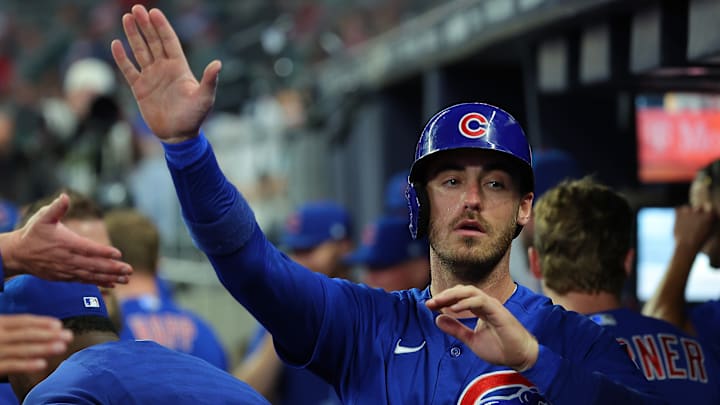In the words of the not-so-stellar President of the United States Gerald Ford, “My fellow Americans, our long national nightmare is over.” Or in the words of Janine Melnitz from Ghostbusters, “WE GOT ONE!”
Regardless of the angle from which you look at this Cody Bellinger contract you have to like it.
As a Cubs fan, you’re getting the top-hitting free agent on the market this season (outside of the hybrid Shohei Ohtani) and you’re getting him on what could be as long as a three-year deal or what could be as short as a two-year or even one-year deal and we’re going to look at the implications to all three of those options below.
Option One: Three-years $80 million dollars
This scenario is probably the most unlikely of the three.
According to Jeff Passan, the deal is front-loaded with Bellinger receiving $30 million in each of the first two seasons and $20 million in year three, making an opt-out after the 2025 season pretty likely. That being said, we’ll look at it anyway.
What it would mean for Bellinger:
In this scenario Bellinger could be as good as he was last season or a below average player.
If he’s not any good then obviously it behooves him to stay on the roster and earn the remaining $50 million guaranteed rather than hitting the open market and potentially taking a smaller payday.
If he’s as good as he was last season he could still look at the free agent crop for the 2024-2025 offseason and see Pete Alonso at a position that Bellinger plays and not want to compete with him on the open market so he sticks around in Chicago for another $30 million in 2025 in his age-29 season and reassesses after the season on whether or not he can get a megadeal before his 30th birthday.
What it would mean for the Cubs:
According to Spotrac, this would put the Cubs at a projected Opening Day payroll of almost $229 million dollars, or about $8 million dollars under the first tier of the Competitive Balance Tax.
That still gives them some flexibility to add at the deadline in 2024 but it puts the team in a position that ownership has vocally said that they don’t want to be in.
Things would get a little easier in 2025 as the Cubs will shed more than $10 million dollars worth of dead money from the Trey Mancini and Tucker Barnhart contracts, as well as Kyle Hendricks and Drew Smyly’s combined $26.5 million dollar contracts. That will lead the team to have about $100 million dollars to work with under the first tier of the tax next year but you have to assume that Justin Steele’s arbitration deal (or extension if the Cubs buck their past trends) will be more expensive than his $4 million dollar hit in 2024.
In 2026 the Cubs would have removed the risk from this deal completely. They feel confident that Bellinger will be a valuable player until he’s 30 years old but didn’t want to pay him top market dollars after that and that logic has sound reasoning. In 2026 his cap hit drops to $20 million and the Cubs add him to the list of players (Seiya Suzuki, Nico Hoerner, Ian Happ, Jameson Taillon) who are free agents following the 2026 season.
Bellinger still being on this contract, not necessarily being with the team, is probably the worst case-scenario for the Cubs and it’s really not all that bad of a scenario.
Bellinger remaining on the third year likely means that he hasn’t put together two seasons before this that would earn him more than a one-year $20 million dollar contract going into his age-31 season, and that would mean he’d been mediocre at best.
However, at $20 million dollars the contract wouldn’t be an albatross that would prevent the team from targeting big free agents and even if the batted-ball projections at the end of 2023 are the norm he plays Gold Glove defense at two positions to give days off to guys. Is that what you want to see at $20 million? No, but it could be much worse.
